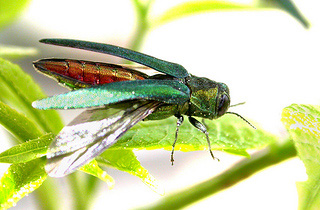By Lisa Swann

Unless you’ve had your head in the clouds, you know that much of the country is experiencing unusually cold temperatures. Minnesota recently experienced a sub-zero temperature plunge so severe that school was cancelled — a rare occurrence in a state that is no stranger to cold winters. One positive effect of this arctic blast is that it may have killed off a significant tree pest — the emerald ash borer.
Dr. Lee Frelich, director of the University of Minnesota’s Center for Forest Ecology, is an expert when it comes to Minnesotan forests, including insect mortality in extreme cold.
According to Dr. Frelich, winter mortality for emerald ash borer is temperature-dependent. He says the larvae can supercool to a certain point, but they die if they freeze, and cold tolerance varies among insects.
A recent study for the Forest Service in Minnesota showed that five percent of insects die at zero degrees Farenheit, while 34 percent die at minus 10, 70 percent at minus 20 and 98 percent at minus 30 degrees.
There is variance, as some insects are inside bark close to the ground where they are warmer and more protected, and some are insulated by snow.
However, with prolonged overnight and daytime cold like Minnesota has recently experienced, the insulating effect becomes minimal.
There are some 900 million ash trees in Minnesota, many of which grow in the swamps in the northern part of the state. The question is whether the few insects who do survive the recent cold spell might be more resistant to cold weather which could mean a new generation of more cold-tolerant insects.